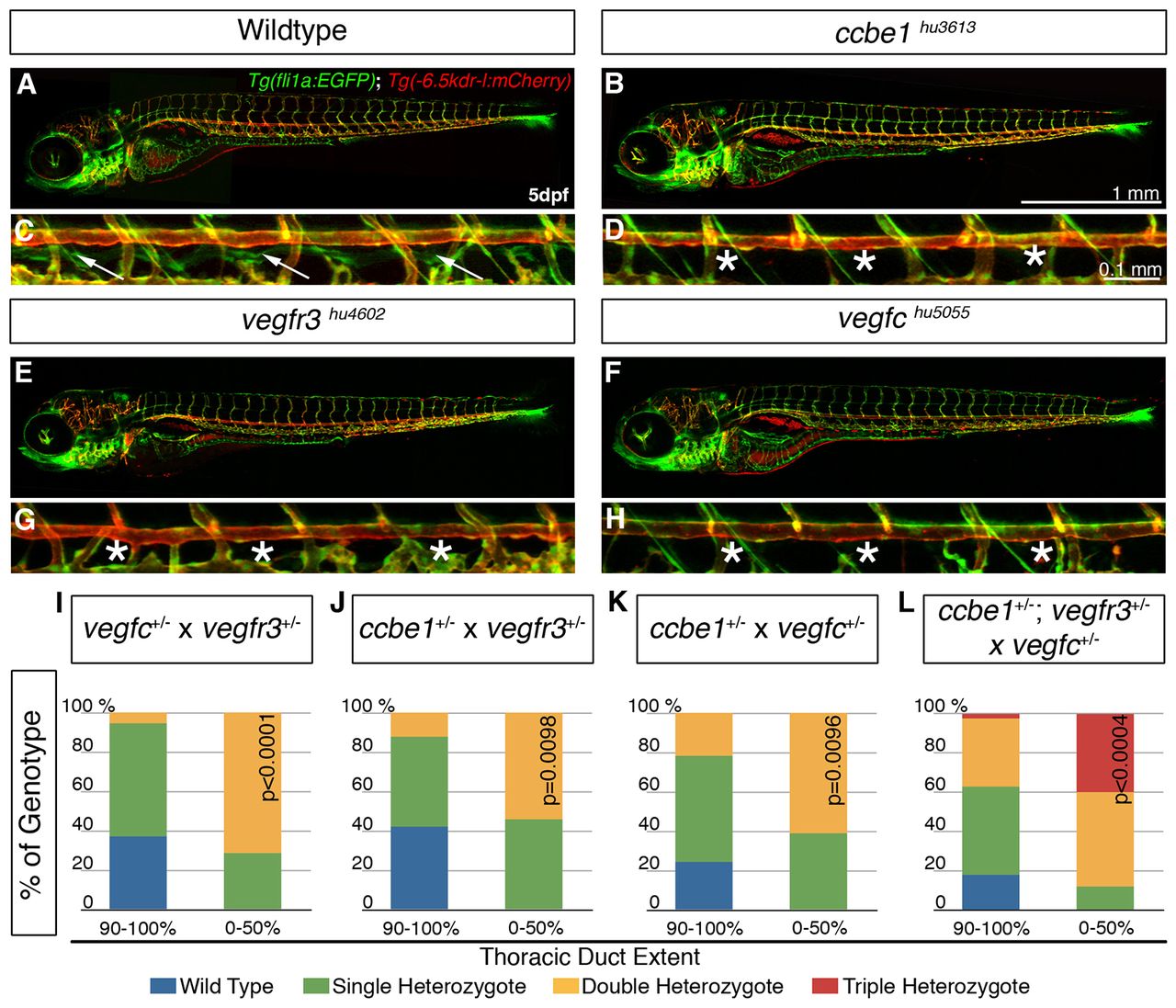Fig. 2
ccbe1, vegfc and vegfr3 genetically interact in double and triple heterozygous animals. (A-H) Confocal projections of Tg(fli1a:EGFP; kdr-l:mCherry) show grossly unaltered overall morphology and blood vasculature in ccbe1hu3613 (B), vegfr3hu4602 (E) and vegfchu5055 (F) mutants compared with wild type (A). The TD (C, arrows) is absent in ccbe1hu3613 (D), vegfr3 hu4602 (G) and vegfc hu5055 (H) mutants (asterisks). (I-K) ccbe1, vegfc and vegfr3 genetically interact in double heterozygote embryos, which display lymphatic defects. Offspring from vegfc+/- and vegfr3+/- carriers give rise to 28% of embryos (n=28/99) with a TD length of d50%. This population is significantly enriched (71%; n=20/28; P<0.0001) in double heterozygotes (I). Similarly in ccbe1+/- and vegfr3+/- crosses, 24% (n=24/100) embryos develop d50% of their TD, and again this population is significantly enriched (54%; n=13/24; P=0.0098) in double heterozygotes (J). In ccbe1+/- and vegfc+/- crosses, 14% (n=18/126) of embryos develop d50% of their TD, this population being significantly enriched (61%; n=11/18; P=0.0096) in double heterozygotes (K). (L) Crossing double heterozygous ccbe1+/-; vegfr3+/- animals to vegfc+/- animals, results in 21% (n=25/121) of embryos with d50% of TD: within this population, 40% (n=10/25; P=0.0004) of the embryos were triple heterozygotes, a significant enrichment from the statistical triple heterozygosity rate of 15%.

